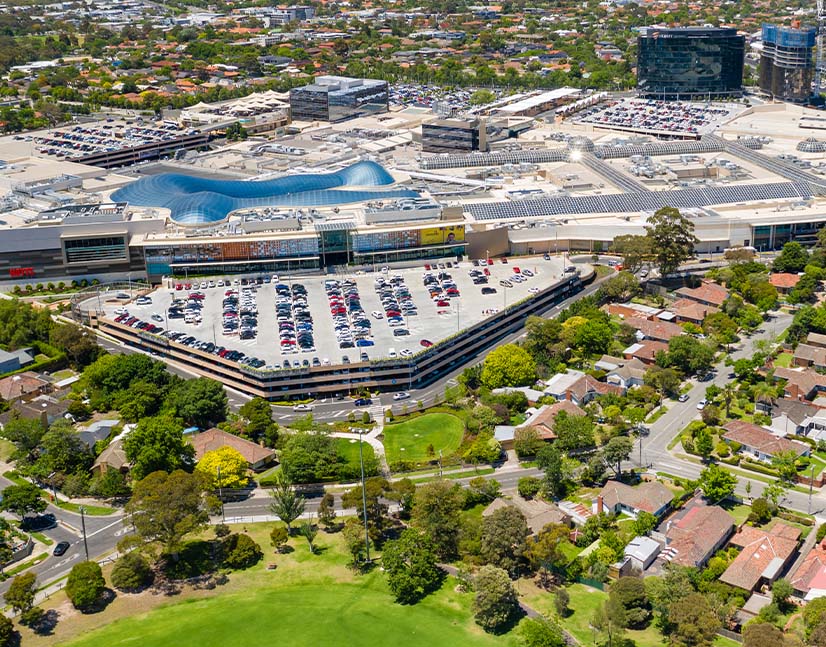
Get ready now for major hedging changes, regulators warn
Australian regulators and global industry participants have warned market users not to delay preparations for sweeping changes to international hedging markets. Meanwhile, although Australia’s bank-bill swap rate (BBSW) has survived the cull of global interbank offered rates (IBORs), local regulators are now intensifying their suggestion that one-month BBSW may no longer be suitable as a reference rate for new issuance.
Discussion at the International Swaps and Derivatives Association (ISDA)’s annual Australia conference in Sydney on 23 October was dominated by planning for the demise of IBORs and the consequences for Australian market participants – especially, but not exclusively, those active in cross-currency debt markets.
“The reforms to strengthen interest-rate benchmarks represent one of the biggest changes ever to occur to financial markets,” said Scott O’Malia, ISDA’s London-based chief executive. “I can think of no other event, past or present, that even comes close in terms of scale and impact.”
Global transition
Key global reference rates including LIBOR are likely to expire by the end of 2021, when regulators will stop requiring trading banks to submit daily pricing. Guy Debelle, deputy governor at the Reserve Bank of Australia (RBA) in Sydney, emphasised that this is not a case of regulators actively shutting down IBORs. With very limited trading volume in underlying global bank-bill markets, it is instead the case that without regulatory compulsion there will likely be no feasible price discovery in these base rates.
With the global supply of securities referencing LIBOR alone commonly estimated to have at least US$350 trillion equivalent of notional value, Debelle says it is positive to see global markets starting to develop alternative benchmarks.
“It’s not that there has actually been a lot of disagreement about transition – it’s just a question of market participants spending the time needed to sit down and work out what they need to do,” Debelle said. “The issue was that there seemed to be an expectation that someone was going to figure everything out. That is changing, and certainly no-one should be counting on ‘something coming along’.”
Indeed, the pace at which market participants may need to adapt to the changes may be even quicker than generally believed. Peter Bierkens, Sydney-based executive director, regulatory strategy at Commonwealth Bank of Australia, highlighted comments from European Central Bank board member, Benoît Cœuré, to the effect that EURIBOR may be rendered impermissible by new European Union benchmark legislation set to come into effect at the start of 2020.
Meanwhile, Alexander Lord, director, assurance and advisory at Deloitte in Sydney, argued that transition to new benchmarks in the physical market is not yet gathering real momentum. He told the ISDA conference that the oft-quoted figure of US$350 trillion of contracts referencing LIBOR may in fact have grown – to closer to US$370 trillion – suggesting that, for now at least, a full-fledged move to alternative base rates is not in process.
Transition complexities
Most major global markets have already proposed substitute benchmarks (see table), and some bond issuance is already pricing off these.
Alternative risk-free rates in planning or introduced
| Jurisdiction | Alternative risk-free rate | Working group responsible | Administrator | Format | Tenor | Launch date |
|---|---|---|---|---|---|---|
| EU | ESTER | Working Group on an RFR for the Euro Area | European Central Bank | Unsecured | Overnight | Oct 19 |
| Japan | TONA | Study Group on Risk-Free Reference Rates | Bank of Japan | Unsecured | Overnight | Active |
| UK | SONIA | Working Group on Sterling Risk-Free Rates | Bank of England | Unsecured | Overnight | Active |
| US | SOFR | Alternative Reference Rates Committee | Federal Reserve Bank of New York | Secured | Overnight | Active |
Source: International Swaps and Derivatives Association 23 October 2018
For instance, in August World Bank printed a US$1 billion bond using the US secured overnight financing rate (SOFR) as its pricing benchmark. Even though this deal’s two-year tenor means it will mature before the likely demise of LIBOR, a World Bank statement says it “helps develop the market for SOFR”.
However, resolving the challenges of IBOR demise will not be as straightforward as simply nominating new benchmarks based on currency or jurisdiction – because the new rates do not include the same fundamental characteristics.
Specifically, IBORs inherently include an element of term premium while all the major alternative reference rates are for overnight funding. And IBORs factor in credit risk whereas the new rates are all risk-free. SOFR is also a secured rate.
In part, these discrepancies exist because of the need to replace IBORs with replacements that will prove resilient in the long run. “New rates are being developed to fit local market infrastructure,” Bierkens explained. “This is appropriate, but the US’s secured rate and the UK’s unsecured rate, for instance, could behave quite differently in periods of market stress or volatility.”
Any discrepancy between how the reference rate written into a legacy contract might be expected to behave and how a putative substitute behaves is a matter requiring resolution before transition.
While Debelle was quick to point out that the bulk of IBOR-referenced securities are relatively short dated he also said the tail of the legacy book is substantial. “The market can come to a solution but it has to do so itself – it needs to be thought about ahead of time,” he added.
This means a major task of engagement with stakeholders, Lord explained. All parties, from bondholders to rating agencies, will have to acquiesce to proposed transitions for outstanding contracts. Conduct risk will also be an important factor, he added – especially as some market participants will undoubtedly seek to take advantage of positive or negative valuation changes arising from transition.
Credit borrowers will be especially keen to see the issues around term and credit pricing resolved, said Jing Gu, senior counsel at ISDA in Singapore. She explained that corporate borrowers, among others, use a forward-looking rate to estimate cost and manage liquidity.
Australia’s challenges
In some ways, Australian market participants will avoid some of the heavy lifting in base-rate transition. Regulators speaking at the ISDA conference reaffirmed their faith in the refreshed methodology for BBSW calculation in the hands of its new administrator, the Australian Securities Exchange (ASX).
“There are trades in BBSW, and there are not trades in LIBOR,” Debelle said. “That’s a really important distinction to get across and it’s why there is no obvious ‘expiry date’ for BBSW.”
Meanwhile, Cathie Armour, Sydney-based commissioner at the Australian Securities and Investments Commission, said the regulator “is confident that the work done to ensure the resilience of BBSW will ensure BBSW remains a key benchmark in the years ahead”.
In fact, the outcome of the recent BBSW methodology review, including the new reliance on nonbank trading activity for the rate set and the transfer to ASX administration, appears to have gone better than expected.
Armour pointed out that 88 per cent of the still-vibrant Australian bank-bill market is now being conducted during the BBSW rate-set window, allowing six-month BBSW to be set by volume weighted-average price (VWAP) 93 per cent of the time and three-month BBSW 78 per cent of the time.
Helen Lofthouse, executive general manager, derivatives and OTC markets at ASX in Sydney, added: “We are delighted with the results – we are in a better place than any of us anticipated. I think BBSW now really has a secure future in Australia.”
This does not mean the local market is without challenges. Even in a purely domestic context, the biggest question mark appears to be over securitisation issuance – which traditionally uses one-month BBSW as its reference rate. There is much less trading activity in one-month bank bills and what does take place tends to be banks repurchasing their own bills rather than paper of such short tenor being a genuine investment product.
Regulators are now openly suggesting that the securitisation sector re-examine its benchmark conventions. “The frequency of VWAP formation in other BBSW tenors has been less, so market participants should carefully consider whether derivatives and other transactions referencing BBSW are being benchmarked against the most liquid tenors,” Armour told the ISDA conference.
Furthermore, Debelle suggested the RBA is not convinced there is any convincing reason for the securitisation sector to use one-month BBSW as opposed to an alternative bills tenor. “The probability is that this is a legacy market – as are most IBORs. There may not have been much thought as to whether one-month BBSW is really the appropriate or right reference rate for securitised product,” Debelle said.
Cross-border flow
The challenges for Australian bond issuers in particular are only enhanced when it comes to cross-border and cross-currency activity. Debelle commented: “A large amount of swap contracts have BBSW on one end and LIBOR on the other. This is an interesting situation, especially if the move is to having a risk-free rate on one end and a credit rate on the other.”
Again, Debelle expressed confidence that the market can reach an agreed solution to transition of legacy contracts and a convention for future cross-border issuance from Australia. But he counselled market participants to engage early to find a solution before it becomes urgent.
Australian market users need to make sure they have a voice in international negotiations, Armour added. She welcomed ISDA’s market-wide consultation on technical issues related to new benchmark fallbacks for derivatives contracts that reference the IBORs and said: “It is vital that Australian market participants begin preparing for the end of LIBOR, and ensure their voices are heard in the development of alternative risk-free rates.”

HIGH-GRADE ISSUERS YEARBOOK 2023
The ultimate guide to Australian and New Zealand government-sector borrowers.

nonbank Yearbook 2023
KangaNews's eighth annual guide to the business and funding trends in Australia's nonbank financial-institution sector.














